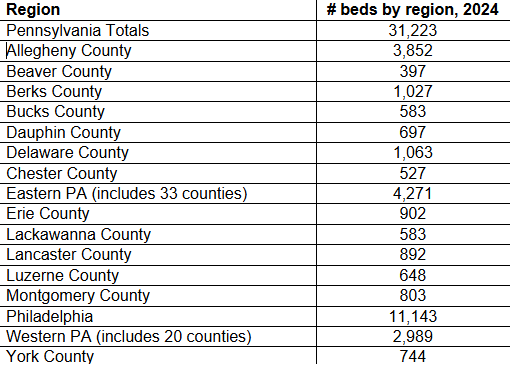How Might the President's FY2026 Budget Proposal Effect Pennsylvania's Strategies on Homelessness?
This is about leadership and management
The president has presented his budget. It’s said to be ‘skinny,’ i.e., few details. However, it proposes huge changes to a mature system that has taken more than thirty years to develop that will affect most communities in Pennsylvania.
Among the proposed changes:
Homelessness Assistance Grants (HAG) cut by $532 million.
Cuts HUD rental assistance programs by $26.7 billion, a 43% cut.
Combines Housing Choice Vouchers (HCVs), public housing, project-based rental assistance (PBRA), Section 202 Housing for the Elderly, and Section 811 Housing for Persons with Disabilities and block granting them into one program for the states to manage.
Community Development Block Grant program and the HOME Investment Partnerships Program are eliminated. Both fund affordable housing development and 50 Pennsylvania communities were awarded $238 million in 2024.
Lets look at some indicators of the system about Pennsylvania’s approach to ending homelessness.
Capacity:
Currently, there are 366 housing projects supporting homeless persons throughout Pennsylvania. Capacity of the system is defined here by the number of emergency, transitional, permanent supportive and rapid rehousing beds by ‘Continuum of Care’ regions1 in 2024 (does not include domestic violence system):
Pennsylvania Housing Totals in 2024i:
Estimated Total # Beds: 31,223
12,756 emergency, transitional, and Safe Haven beds
5,529 Rapid Re-Housing beds
12,938 permanent supportive housing
Does not include domestic violence system
Every region in Pennsylvania is involved.
Estimated #s of Pennsylvanian Persons Experiencing Homelessness:
Housing system:
The number of persons experiencing homelessness identified on a single night in January of 2024 as either in shelter or living outside was 14,088 persons. This is not the total number of homeless persons throughout the year. More than 15,000 persons are homeless in Philadelphia annually. Unfortunately, HUD does not report out the total number of homeless persons served in a year, although it has that data.
Of that number 2,873 were children under the age of 18
758 were over the age of 64
719 were veterans, including 98 were unsheltered
Education system, 2023: 46,714 children and youth were identified as homeless by the Pennsylvania Department of Education in 2023. This program’s services are funded by $5 million from the ‘Education for Homeless Children and Youth’ program managed by the United States Department of Education, and serves more than 499 school districts and 100+ charter schools.
Federal Funding: In 2024, HUD awarded Pennsylvania’s 16 regions with funding for various housing programs, planning, and infrastruture, for a total of $177 million:
Other funding sources that support homeless work includes the Emergency Solutions Grant program, which provided $16,381,490 in 2024 and was distributed to 19 counties and to the Commonwealth.
In total, the federal government invested $193,993,916 directly to homeless strategies. There are other programs, like SAMSHA and the Social Services Block Grant, that fund strategies, but these are the most significant investments.
In addition, other federal funds supported the development of affordable housing that might benefit eligible homeless families and individuals are also being proposed for significant change. In FY 2024, $244 million was awarded to 110 projects in 51 communities throughout Pennsylvania by the three programs listed below.
The point of this is that the homeless housing system is a highly developed and mature approach that provides resources throughout the Commonwealth. Changes in one part of the approach will affect both the homeless person who benefits plus the ability of the state, counties, cities and towns, and housing providers who are involved.
To simply do away with funds, shrink capacity, change operational management without a plan or an understanding of the challenges the homeless systems face is a recipe for significant upheaval in the lives of vulnerable families and individuals. Its poor management and leadership.
Sources:







Thank you for such a thorough and thoughtful analysis. Having this kind of detailed information helps tremendously when talking with those who will make decisions on the direction we will all go. Nicely done!